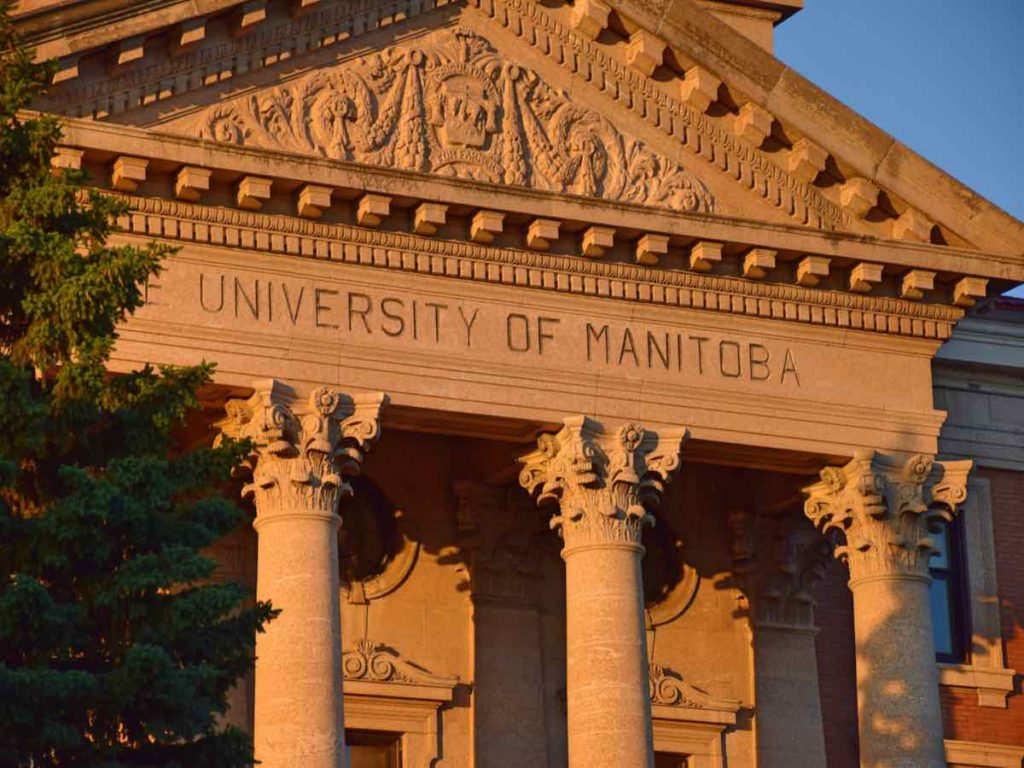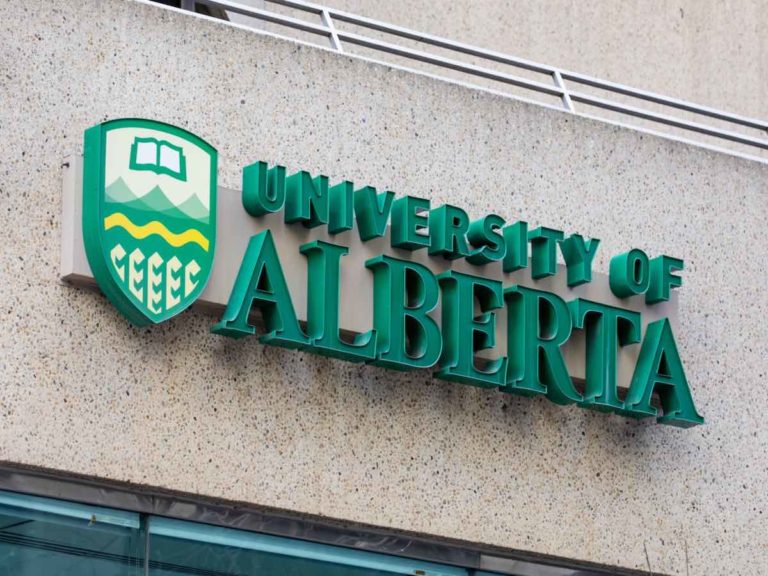The University of Manitoba: Your Path to Affordable Education and Permanent Residency
The United States and the United Kingdom are the top two destinations for international students.
Canada sits in the third place.
Manitoba is a Canadian province with lots of degree-seeking students from various parts of the globe — they love the range of programs, affordable tuition and cost of living, and easy path to permanent residency.
Campus size- and enrollment-wise, the University of Manitoba is the largest in Manitoba.
It’s a public research university in Winnipeg City in the heart of Canada.
UM is the first-ever university in Western Canada. It has 30,783 students, and 22.7% (6,991) are international students representing more than 120 countries.

Academics: Supportive for International Students
According to U of M, there are three core activities in the learning experience it offers:
- Outstanding teaching
- Innovative learning approaches
- Exceptional research
Undergraduate students can customize their studies by choosing courses across various schools and departments — more than 5,000 academic staff members are available to lend a hand.
It’s one of the most research-intensive universities in Canada.
Being such, it provides a suitable environment for students looking to obtain in-depth knowledge in their respective majors.
Students can also have the opportunity to work alongside or receive one-to-one mentorship with experts in their respective subjects of interest, which is an excellent preparation for graduate school and a prolific career.
Three- and Four-Year Undergraduate Degree Programs
U of M offers more than 100 undergraduate programs.
Typically, an undergraduate program contains four components:
- A major
- A minor
- Core degree requirements
- Electives
The administration and academic advisors say students should take these various components at the same time each year so that they can progress through the degree efficiently and graduate on time.
At UManitoba, not all bachelor’s degrees are the same.
Undergraduates can choose from two types of bachelor’s degrees, depending on their educational and career goals. The timeframe they set for themselves is also a selection factor.
Here are the number of credit hours and completion type for the two bachelor’s degree types:
| Credit Hours | Completion Time |
|---|---|
| 120 | 4 years |
| 90 | 3 years |
Between the two, the latter is the less common type.
Global University Rankings
High school teenagers who consider an institution’s reputation in the eyes of their go-to college ranking sites of utmost importance may find most of U of M’s rankings a letdown.
Its most recent Times Higher Education (THE) World University Ranking?
Somewhere between #351 to #400.
However, it’s worth pointing out that there are 1,906 universities across 108 countries and regions included in the list, which makes UM’s ranking not as bad when looking at the entire picture.
US News ranking of it isn’t that good and bad either.
Right now, it’s #372 in Best Global Universities.
Please note that there are 2,000 universities ranked from over 90 countries — UM is still in the top 20% of all postsecondary institutions on the planet as far as US News is concerned.
US News also ranks it #14 in Best Global Universities in Canada.

International and Canadian Student Life
UM has two main campuses and multiple satellite campuses.
Its main campuses are in:
- Fort Garry
- Bannatyne
Measuring 280+ hectares, its Fort Garry campus is just 20 minutes from the city center.
It has plenty of flora and is home to over 90 major buildings, including four colleges, research facilities, and residences. There are also recreational facilities where students can unwind.
Meanwhile, the Bannatyne campus is downtown, allowing students easy access to a vibrant community. Many of the nine buildings serve students as they prepare to be professionals in the healthcare arena.
On-Campus Living Situation
U of M does not require first-year students to live on campus.
However, over 1,300 students choose to live in residence facilities, including international students who leave their family and friends behind to pursue their dream bachelor’s degree.
Students can choose from four residence halls:
- Arthur V. Mauro Residence
- Mary Speechly Hall
- Pembina Hall Residence
- University College Residence
Mary Speechly Hall and University College Residence are both traditional dorm-style residences. Both also provide the strongest sense of community, making them perfect for those who want to be in a close-knit group.
On the other hand, Pembina Hall is the newest residence, offering a contemporary vibe.
Every residence option offers standard features such as:
- Furnished rooms
- Meal plans
- Community kitchens
- Laundry facilities
- High-speed internet
- Reserved parking
Parties, Greek Life, and Sports: They’re All Here!
The Canadian news magazine Maclean’s asked over 23,000 undergraduate students from various universities across the country about how much time they spend partying every week.
It found that U of Manitoba students spend 2.1 hours every week partying.
Students at some of the largest party schools in Canada, such as St. Francis Xavier University and Bishop’s University, spend seven hours or more per week partying.
U of M is not the top party school in Canada, but its students know how to have fun.
Contributing to on-campus parties is the presence of Greek-letter associations. There are five fraternities and three sororities, and members collectively rank the overall experience an average of 74.5%.
Sports are also a crucial part of the UM campus.
There are 16 varsity teams across nine sports. They are the UM Bisons or simply Bisons.
Since 1975, they have won 44 national championships — among Canadian universities, athletic teams participate in U Sports, the counterpart of the National Collegiate Athletic Association (NCAA) in the country.
Some of the sports where the Bisons excel the most include:
- Basketball
- Cross country
- Football
- Hockey
- Track and field
- Volleyball
Undergraduate students into sports but whose skill levels are not enough for national participation may try to join REC Clubs that allow them to play sports, have fun, and make friends.
Some REC Clubs available are:
- Badminton
- Climbing
- Rugby
- Soccer
- Tennis
- Ultimate
- Wrestling

Getting Into UM: How and When
UManitoba has a top public research university reputation.
Despite this, it’s not as selective as many would think — with an acceptance rate of 52%, your chances of getting into it, even as an international student, are fairly good.
Still, it’s a must to be a competitive applicant.
Minimum Admission Requirements
International students from the US must meet minimum academic requirements to be eligible to apply as an incoming first-time, first-year student at the University of Manitoba.
Requirements can vary depending on the program’s selectivity level.
UM’s admissions process is dissimilar from most other schools in Canada and the US in that it looks at the average grade of specific courses, not the cumulative high school GPA.
For most undergraduate degree programs, here are the minimum academic requirements:
- Average of at least C+ in required senior-level courses
- Senior-level courses must not be lower than C-
The said senior-level courses are as follows:
- English
- Mathematics
- A third academic course
- A fourth academic course
Some of the most competitive programs at UManitoba require an average of either an A- or B, with grades in required senior-level courses not lower than C-.
As expected, senior-level course requirements vary from program to program.
For example, besides English and Mathematics, Engineering requires Chemistry and Physics. It’s also a must for the international applicant to have Calculus in the transcript.
Application Deadlines for Incoming First-Year Students
Different academic programs have varying application deadlines.
In addition, some undergraduate programs accept applications all year round (fall, winter, and summer terms), while others open their doors to applicants only for the fall term.
The most selective programs are often those that accept applicants during the fall term only, including:
- Commerce
- Engineering
- Health Sciences
- Health Studies
- Kinesiology Physical Education
- Science
March 1 is the deadline for fall term applications.
On the other hand, it’s October 1 for the winter term and February 1 for the summer term.
Disclaimer: The views and opinions expressed in this article are those of the authors and do not necessarily represent those of the College Reality Check.




